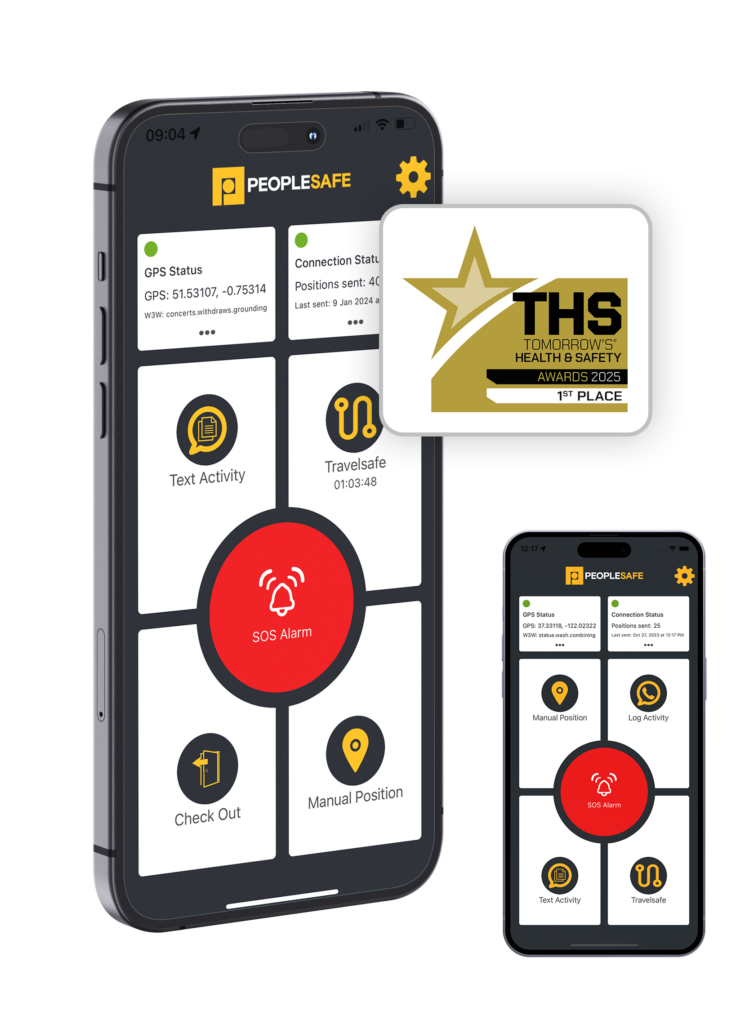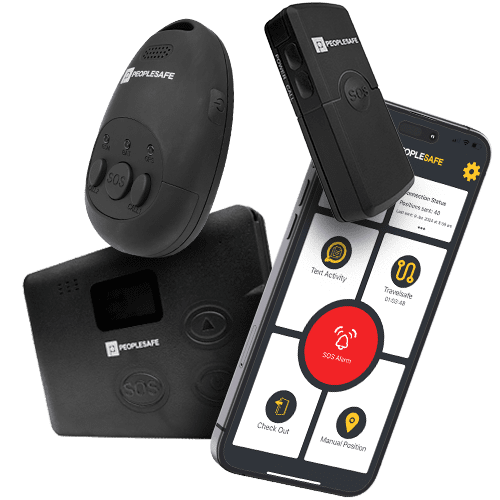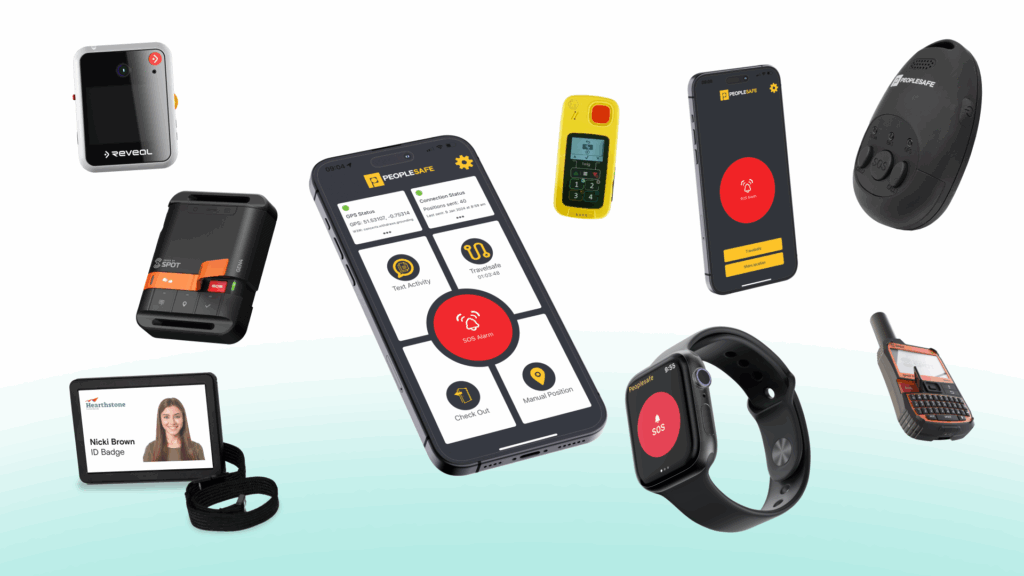Buddy System: How Does It Keep Workers Safe?
The health, safety and wellbeing of employees is the responsibility of their employers. This duty of care extends to all employees, including lone workers, who may be at increased risk of harm due to their isolated working conditions. One common approach to fulfilling this duty and detecting incidents is through the implementation of a buddy system.
What is a buddy system?
In a work environment, a buddy system typically involves a pair of colleagues in similar roles working together to look out for the health, safety and wellbeing of each other. By buddying up, workers can discuss their thoughts on hazards, carry out dynamic risk assessments and share the responsibility for checking up on each other’s mental and physical wellbeing. The outcome should be that both parties feel safer and more secure, often making them more productive and confident.
In jobs where there is health and safety risk, buddy systems can provide some support and enhance safety. In the event of an incident, a buddy can offer assistance and call for help if the victim is unable to.
While there is no set protocol for how a buddy system operates, there are two common methods. The first is that the two buddies paired up will complete all of their activities together, as a team. The second is that they will share details of their planned activities with each other, including the names of anyone being met, the location of the meeting, anticipated timings for how long this activity is expected to take, and will regularly check in with each other throughout the day. For example, via text or a phone call after each appointment or when arriving safely home. This is why buddy systems are often implemented for lone workers who may otherwise get into dangerous situations without anyone being aware.
What are the advantages of a buddy system?
1. Utilises existing technology
One of the most notable advantages of buddy systems is that they only utilise an employee’s mobile phone, either a personal or a company-issued one. This means employers don’t need to invest in additional equipment, which can ultimately make it a cheaper option than implementing a professional personal safety service. This can also improve adoption rates as most people already use mobile phones in their daily life, so will not need to adjust to carrying a new piece of equipment.
2. Builds teamwork and collaboration
Another advantage of buddy systems is that they can encourage a sense of teamwork and collaboration among colleagues. When employees participate in a buddy system, they work together to identify potential dangers and solve problems that may arise. This can create a strong bond between colleagues, improve communication, and encourage a culture of safety and mutual support in the workplace. By default, this can have a positive impact on their mental wellbeing as buddy systems can help to counter feelings of isolation that lone workers may experience.
3. Gives employees peace of mind
Additionally, buddy systems can also provide a sense of reassurance and peace of mind for employees. Knowing that they have a colleague who is looking out for their safety and wellbeing can alleviate anxieties and fears they may have about potential risks in the workplace. This can also improve employee morale and job satisfaction, as they feel supported and valued by their employer and colleagues.
What are the disadvantages of a buddy system?
Despite the benefits, buddy systems come with several serious cons:
1. Provides a false sense of security
One of the main disadvantages of a buddy system is that it can lead to complacency and a false sense of security. When employees have a buddy, they may rely too heavily on their partner to identify potential hazards or be able to help in an incident, rather than staying vigilant and looking for risks themselves. This can lead to mistakes and oversights, which can ultimately result in accidents and injuries.
2. Both buddies may need help at once
Another potential issue with buddy systems is the risk that both partners could need help at the same time. If this occurs, it could be that no one is aware that either buddy is in danger. Even if both parties are working separately, there is still the possibility that they’ll both need aid at the same time. If they’re unable to contact each other to request help, they may go for extended periods without the assistance they require, which can have a significant impact on the severity of the incident.
3. Unnecessary expense
In-person buddy systems may also require two people to accomplish a task that could be completed by one person. This can result in unnecessary expenses for businesses, as they need to pay twice the wages than would otherwise be required. Additionally, this could lead to lower job satisfaction for the employees as they may feel that their skills and abilities are not fully utilised.
4. Negative impacts on employee mental health
The responsibility on employees over their colleague’s health and safety can be a source of unnecessary stress and can have a negative effect on employee wellbeing. If an employee suffers from an injury despite the buddy system being in place, they may begin to feel guilty and blame themselves. In more extreme cases, this could have a negative effect on the employee’s mental health. Additionally, when employees are paired with a buddy, they may feel hesitant to take annual leave or time off when they are sick, as they don’t want to leave their buddy without any protection or support. However, neglecting to take leave when needed can have detrimental effects on employee wellbeing.
5. Reliance on signal coverage
The effectiveness of many buddy systems relies on having reliable mobile signal coverage. This can be a significant issue for workers who operate in areas with poor or no signal, such as forests or underground environments. A lack of signal can also lead to a lack of communication, creating confusion and leading to false alarms. If an employee is unable to check in due to a signal blackspot, their buddy may assume that something is wrong and escalate the situation, even when there is no emergency.
6. Calling for help isn’t always an option
Check-in buddy systems that rely on the person in danger making a phone call are unusable in situations where calling for help isn’t an option. If the worker is face to face with an aggressor, calling for help could aggravate the situation and put them at increased risk of danger. Additionally, lone workers are particularly at risk of slips, trips and falls, which can leave them unconscious or unable to call for help. Some employees may suffer from medical conditions which may leave them unable to call for help. When unconscious or suffering from a medical emergency, an employee is unlikely to be able to call for help and so their buddy will only be alerted that something is amiss when they miss their next scheduled check-in. In serious situations, this delay in getting necessary help could be critical.
7. Missed check-ins and human errors
Another major drawback of buddy systems is that they depend on both employees following the process consistently. If one employee fails to check in, the other employee may escalate the situation, only to find out that everything is ok. Over time, the absence of a check-in message may become normalised, leading to complacency and a lack of urgency in responding to real emergencies. Additionally, if one employee doesn’t notice the absence of a check-in message, they may not escalate the situation as they should. In both of these cases, if something serious has happened, these human errors could lead to someone not getting the vital help they need.
What’s the best alternative to a buddy system?
A dedicated lone worker support solution can offer a more reliable and less strenuous solution to managing employee health and wellbeing. With such solutions, employers can enjoy the benefits of a buddy system without placing stress or burden on a single colleague.
Lone worker solutions provide peace of mind that expert help is available, without the need for colleagues to identify a potential emergency. Instead of having a ‘buddy’ to call or check in with once a task is finished, employees can set their own timers for how long a task is anticipated to take. When the timer runs out, the user can easily confirm their safety or extend the timer if necessary. If no action is taken, an alarm is automatically raised to a 24/7 Alarm Receiving Centre (ARC).
All lone worker devices have the ability to raise an SOS alarm at any time. The option to raise an alarm discreetly at the touch of a button can be a beneficial feature for lone workers who may come face-to-face with an aggressor. With Peoplesafe, users can raise an alarm without alerting a potential aggressor that they are signalling for help, which could otherwise risk making the situation worse.
Lone worker solutions also offer a low-cost alternative to employing two members of staff to complete a single person job, providing operational flexibility. Physical devices can be leased meaning there is no upfront cost, or alternatively a lone worker alarm app that utilises employees’ personal or company mobile phones can be implemented, making them an even lower cost alternative to a buddy system.
Lone working devices can be customised to operate in areas of poor signal. This can be ,done by fitting roaming sim cards which connect to more than one mobile network, switching to the one that gives the best coverage at any point in time. Alternatively, specialist devices operate via satellite signal and do not require mobile coverage, such as the SPOT X or SPOT Gen4 devices.
They can also be fitted with a fall detection feature, which automatically raises an alarm when the app or device detects a slip, trip or fall. This means that emergency help can be sent right away, even if the user is unconscious or unable to call for help. In serious incidents, this saving of critical time could have a significant impact on the recovery of the injured user.
Despite the clear benefits of a dedicated employee safety service, buddy systems don’t need to be completely disregarded. Instead, the buddy system can be used in conjunction with a dedicated personal safety service, where pairs of workers can work together to address health and safety issues with the added backup of a professional 24/7 service. When set up correctly, it’s possible to combine the benefits, pairing the efficiency, low costs, and “always on” functionality of a lone worker solution with the key benefits of working alongside colleagues.








